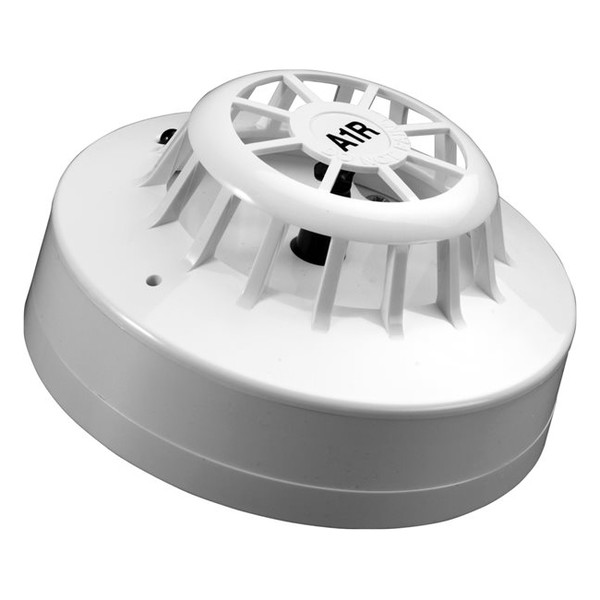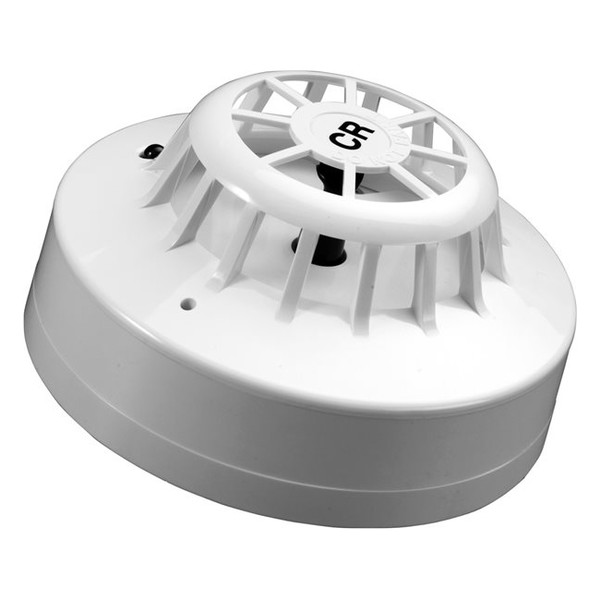Apollo Series 65 Conventional Heat Detector
£10.90 – £11.73
Summary
Apollo Series 65 Heat Class A1R
The Apollo Series 65 Heat Class A1R is a rate of rise (ROR) heat detector. The self-extinguishing case of this detector houses a pair of negative temperature co-efficient thermistors to sense heat – one exposed to the ambient temperature and other thermally insulated.
In normal conditions the thermistors will be in thermal equilibrium. If there’s a fire the external thermistor will record an increase of temperature resulting in lower resistance – this imbalance of resistance will cause the detector to activate an alarm if it reaches a factory pre-set level.
There is also a fixed resistor in the detector. When the resistance level of the resistor and the insulated thermistor combined is greater than that of the exposed thermistor an alarm will be activated. This gives you confidence that an alarm will still be triggered even if the rise in temperature is too slow to activate the ROR part of the detector. The maximum static response temperature of this heat detector is 65°C.
Upon entering an alarm state, the external red LED will illuminate for quick identification. A signal is sent to the conventional fire alarm system control panel via an increase in the current drawn from the supply.
Apollo Series 65 Heat Class BR
The Apollo Series 65 Heat Class BR measures the rate of rise (ROR) of heat. A rapid and significant increase in heat generally means there is a fire in the vicinity.
This heat detector houses two thermistors to monitor the temperature of the surrounding environment – one is thermally insulated whereas the other is exposed to the air around the detector. Under normal circumstances both thermistors will be of an equal thermal state.
When the air temperature outside the heat detector starts to rise the external thermistor will experience a drop in resistance. At the point at which the imbalance in resistance between the two thermistors reaches a pre-set level an alarm will be triggered.
If the rise in temperature is very slow and gradual this method of heat detection will not always work. To prevent an alarm being missed a fixed resistor has also been built in to the detector. If the resistance level of the insulated thermistor and the resistor together exceeds that of the external thermistor an alarm will also be activated. This will occur when the external temperature reaches 85°C.
In both cases a signal will be sent to the conventional fire control panel in the form of an increase in current drawn by the detector from the supply. An external LED will illuminate red to indicate the detector has been activated.
Apollo Series 65 Heat Detector CS Static 80°C To 100°C
The Apollo Series 65 Heat Detector CS Static 80°C to 100°C is a fixed heat detector. The self-extinguishing case of this detector houses just one thermistor which will activate an alarm state when the air temperature in the surrounding vicinity reaches a pre-set level – in this static heat detector the temperature that will have to be reached before an alarm is triggered in 100°C.
Upon detecting that the temperature has reached or exceeded this level the Apollo Series 65 CS heat detector will send a signal to the conventional fire alarm system control panel. This signal takes the form of the detector drawing more current from the supply than usual – anywhere from about 50μA to maximum of 75mA.
During an alarm state an light emitting diode (LED) on the exterior of the heat detector’s white self-extinguishing polycarbonate housing will illuminate red to indicate that it has detected heat from fire.
Apollo Series 65 Heat Detector CR Rate of Rise 80°C to 100°C
Rate of rise (ROR) heat detectors measure the rapid increases in temperature resulting from a fire in the immediate area. The Apollo Series 65 Heat Detector CR is one example of this kind of ROR heat detector.
Two negative co-efficient thermistors in the detector work together to monitor the surrounding ambient temperature and any change that occurs. One thermistor is exposed to the ambient air temperature while the other is thermally insulated as a control. When conditions are normal these thermistors will be in thermal equilibrium.
If there’s a fire the rise in temperature will cause the resistance of the external thermistor to drop – this imbalance of resistance is recorded by the detector and if it reaches a pre-set level an alarm will be triggered.
In the event that the rise in temperature is too slow to be recorded a fixed heat resistor is also included in the detector. If the resistance of the external thermistor is less than that of the insulated thermistor and the resistor combined an alarm will be activated. In this Apollo Series 65 heat detector the maximum static temperature before the alarm signal is sent is 100°C. An external LED will illuminate red when an alarm signal has been sent to the conventional fire alarm control panel.
Choosing a Heat Detector
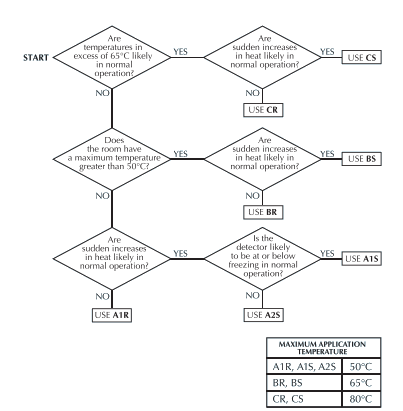
Specifications
Specifications are given at 23°C and 50% relative humidity unless stated otherwise.
- Supply Wiring : 2 wire monitored supply, polarity insensitive
- Supply Voltage : 9 to 33V
- Ripple Voltage : 2V peak to peak maximum at 0.1Hz to 100kHz
- Quiescent Current : 45μA at 24V, 40μA at 9V
- Switch-on Surge Current : as per Quiescent Current
- Alarm Voltage : 6 to 28V
- Alarm Current : 52mA at 24V, 17mA at 9V
- Alarm Indicator : Red LED
- Design Alarm Load : 420Ω in series with a 2V drop
- Holding Voltage : 6V
- Holding Current : 10mA
- Min. Voltage Required To Light Alarm Indicator : 12V
- Remote Output Characteristics : Remote is a current sink to the negative line limited to 17mA
- Storage Temperature Range : -30°C to +120°C
- Operating Temperature : -20°C to +90°C (no icing)
- Humidity : 0% to 95% relative humidity
- Atmospheric Pressure : Unaffected
- IP Rating : 23D in accordance with BS EN 60529
- Dimensions : 100 x 42 mm ( 100 x 50 mm in base)
- Weight : 80g (131g in base)
- Materials : White polycarbonate detector housing rated V-0 in accordance with UL 94, nickel-plated stainless steel terminals
Downloads
- Datasheet (Adobe PDF)
Related Products
-

Apollo 45681-204 Conduit Box
Apollo- Easy to install.
- Aesthetically pleasing.
- Colour matched to detector and base.
-

Apollo Series 65 12V DC Relay Base
Apollo- Detector locking mechanism
- One way fit
- Easy to wire
- Contains an earth connector
- Can be used in fire and security systems
-
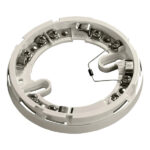
Apollo Series 65 Diode Base
Apollo- Detector locking mechanism
- Easy to wire
- Contains an earth connector
- Terminal for remote indicator
-

Apollo Series 65 Standard Relay Base
Apollo- Detector locking mechanism
- One way fit
- Easy to wire
- Contains an earth connector
-
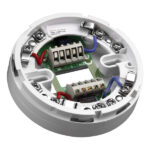
Apollo Series 65 End-of-Line Relay Base
Apollo- Detector locking mechanism
- One way fit
- Easy to wire
- Contains an earth connector
-
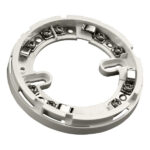
Apollo Series 65 Standard Base
Apollo- Detector locking mechanism
- Easy to wire
- Contains an earth connector
- Terminal for remote indicator







